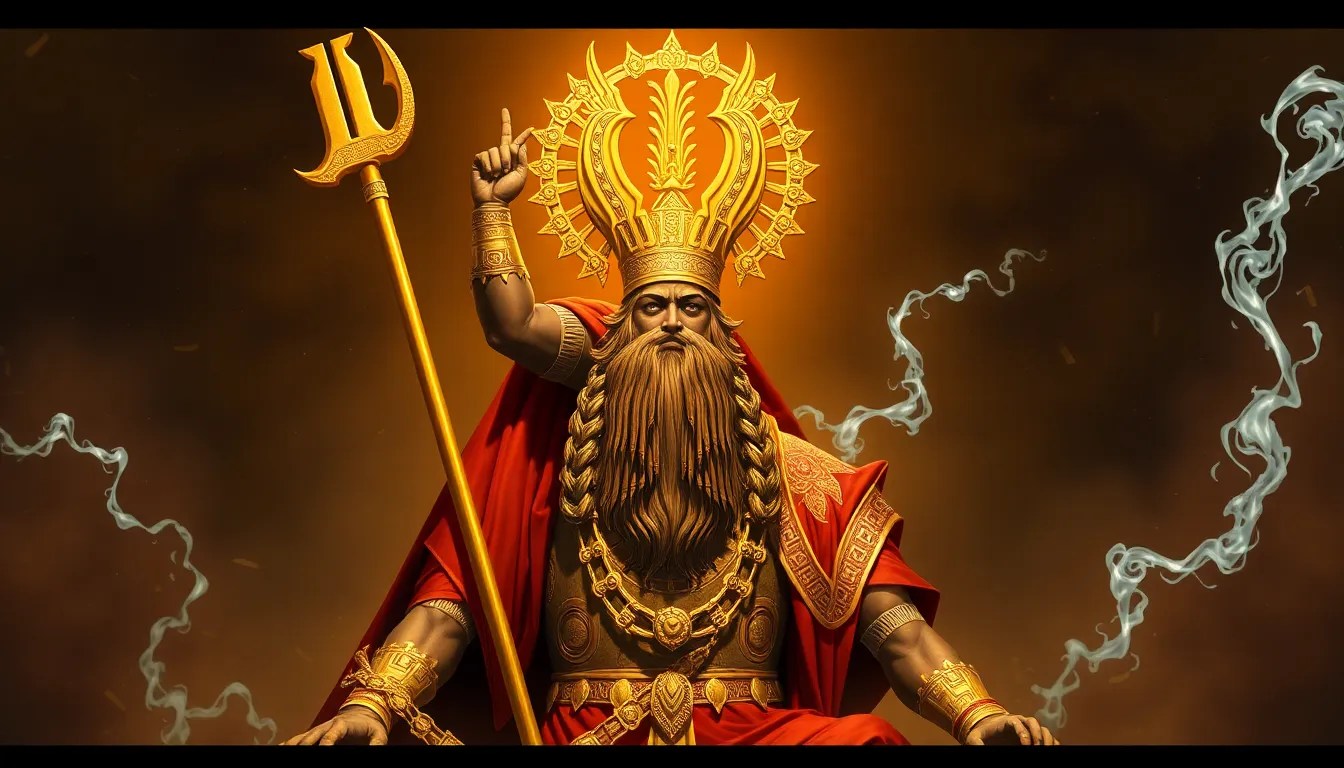Marduk’s Role as the Patron God of Babylon in Enuma Elish
I. Introduction
Babylonian mythology is a rich tapestry of stories that explain the creation of the world, the nature of gods, and the human experience. It holds significant cultural importance, providing insights into the beliefs and values of ancient Mesopotamian societies. Among the pantheon of gods, Marduk stands out as a central figure, particularly in the epic creation myth known as the Enuma Elish.
The Enuma Elish, composed around the 12th century BCE, serves not only as a religious text but also as a political manifesto for the city of Babylon, illustrating the rise of Marduk as a preeminent deity. This epic narrates the cosmic struggle between chaos and order, with Marduk emerging as the hero who brings stability and governance to the universe.
II. The Creation Myth: Enuma Elish
The Enuma Elish begins with the primordial waters, represented by the gods Apsu (fresh water) and Tiamat (salt water). From their union, other deities are born, leading to a generation of younger gods who disrupt the tranquility of the cosmos. Apsu, frustrated by the noise, plots to eliminate the younger gods, but Tiamat opposes this plan.
As the conflict escalates, Tiamat creates monstrous beings to wage war against the younger gods. This cosmic battle sets the stage for Marduk’s emergence as a key player. Chosen by the younger gods for his strength and wisdom, Marduk accepts the challenge of defeating Tiamat, marking a pivotal moment in the narrative.
III. Marduk’s Attributes and Qualities
Marduk is portrayed as a powerful and charismatic deity, embodying a range of attributes that make him a fitting champion for the younger gods. His physical characteristics are often described in grand terms, emphasizing his prowess and magnificence.
- Divine Strength: Marduk possesses extraordinary physical power, capable of overcoming the fiercest foes.
- Wisdom: His intelligence allows him to devise strategies and wield magic effectively.
- Mediator: Marduk acts as a bridge among the gods, maintaining harmony and order in the divine realm.
IV. The Battle with Tiamat
The battle between Marduk and Tiamat is a central theme of the Enuma Elish. Tiamat, having been wronged and enraged, represents chaos and destruction, posing a significant threat to the order established by the younger gods. Marduk’s decision to confront her is not only a personal challenge but a mission to safeguard the cosmos.
Marduk approaches the battle with strategic foresight. He utilizes magical weapons, including:
- The Net: To ensnare Tiamat and her monsters.
- The Wind: To disorient and weaken her.
- The Bow: To deliver decisive blows during the fight.
Marduk’s victory over Tiamat signifies the triumph of order over chaos, establishing his supremacy among the gods and ensuring the continuation of creation.
V. Establishing Order: Creation of the World
After defeating Tiamat, Marduk plays a crucial role in shaping the cosmos. He splits Tiamat’s body to create the heavens and the earth, establishing the structure of the universe. This act of creation underscores Marduk’s authority and his ability to bring forth life and order from chaos.
Marduk also creates humanity from the blood of the defeated god Kingu, who was Tiamat’s consort. Humanity is created with a purpose—to serve the gods and maintain the order Marduk has established. This relationship reflects the divine hierarchy and the responsibilities of the human race.
Furthermore, Marduk lays down natural laws and cycles that govern the universe, ensuring that the cosmos functions in harmony.
VI. Marduk’s Ascendancy and the Rise of Babylon
The narrative of Marduk’s victory transitions from chaos to order, symbolizing his ascent as the patron god of Babylon. His emergence as the supreme deity reflects the political landscape of the time, where Babylon was rising to power among the city-states of Mesopotamia.
Marduk’s supremacy has significant political and religious implications. As the patron deity, he becomes synonymous with the identity of Babylon itself, and the city’s leaders adopt Marduk’s imagery to legitimize their rule.
One of the most significant architectural accomplishments dedicated to Marduk is the Esagila temple. This ziggurat served as a religious center, reflecting the grandeur of Marduk and the importance of worship in Babylonian society.
VII. Marduk in Babylonian Worship and Culture
Marduk’s influence extends beyond mythology into the daily lives of the Babylonians. Numerous rituals and festivals were dedicated to him, celebrating his power and seeking his favor. The most prominent of these was the Akitu festival, which marked the New Year and involved various rites to reaffirm Marduk’s authority.
In art and literature, Marduk is depicted as a majestic figure, often shown with symbols of power such as the scepter and the dragon. His stories were inscribed in clay tablets, ensuring that his legacy was preserved for future generations.
The mythology surrounding Marduk also influenced later cultures, including the Israelites, who adapted elements of Babylonian mythology into their own narratives, as seen in the creation accounts in the Hebrew Bible.
VIII. Conclusion
Marduk’s role in the Enuma Elish and Babylonian society is a testament to the enduring power of mythology in shaping cultural identity. His journey from a young god to the supreme deity of Babylon illustrates the themes of order, chaos, and the importance of divine authority.
As we reflect on Marduk’s legacy, it becomes clear that understanding ancient mythologies enriches our comprehension of human history and cultural development. Marduk not only represents a pivotal figure in Babylonian mythology but also serves as a symbol of the enduring struggle between order and chaos that resonates throughout human experience.



